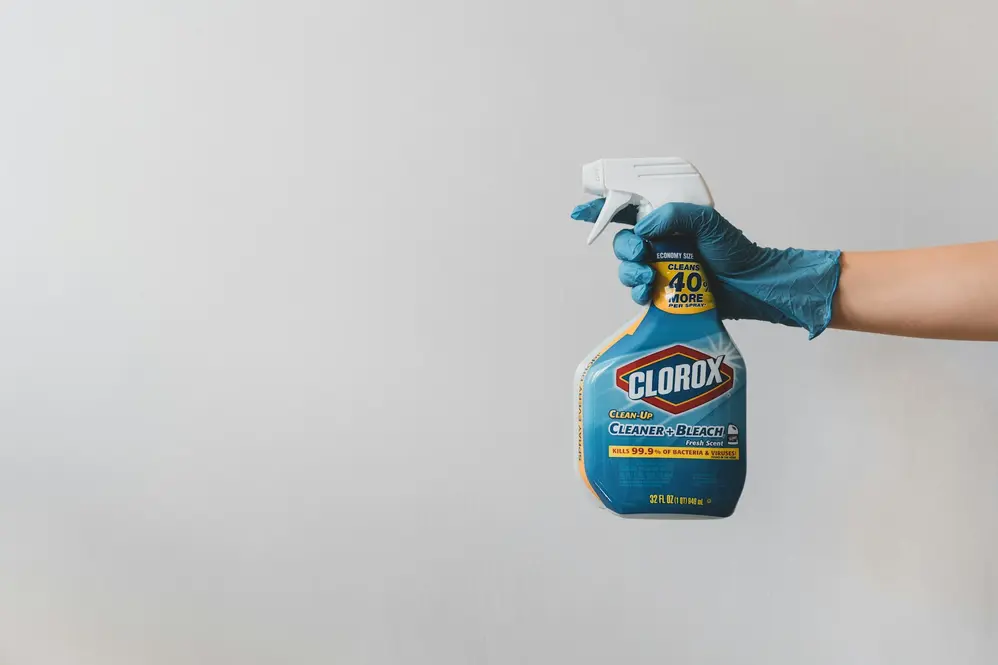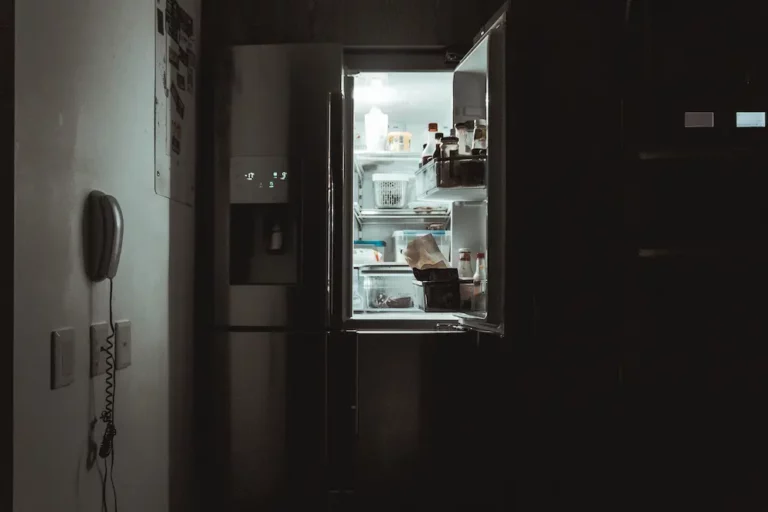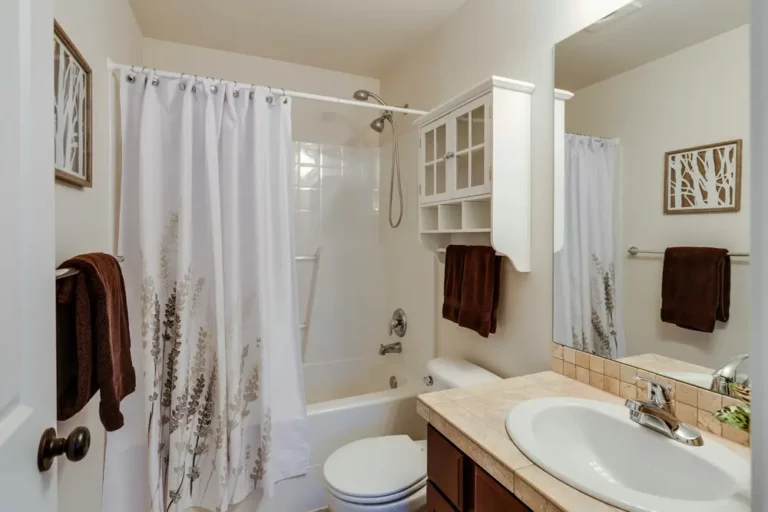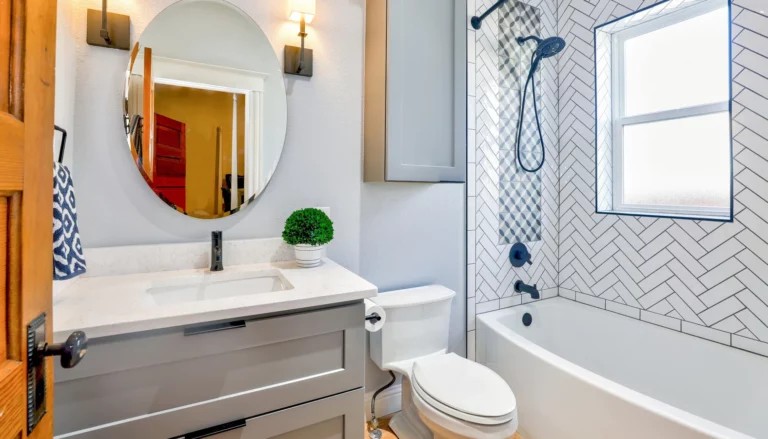Can You Mix Bleach and Baking Soda Safely? Guidelines & Tips
Mixing bleach and baking soda might sound like a chemistry experiment you’d rather avoid. After all, we’ve all heard the warnings about mixing cleaning products. But let’s dive into this common household query with a bit of curiosity and caution. It’s not a simple yes or no answer, and understanding the nuances could save you a lot of hassle.
I’ve encountered this question more times than I can count, and I understand why it’s so popular. Both bleach and baking soda are staples in our cleaning arsenals for good reasons. They’re powerful on their own, but what happens when you combine them? Let’s explore the risks and benefits, and I’ll share some tips on how to use them safely.
Understanding the Combination of Bleach and Baking Soda
Delving into the world of home cleaning solutions, I’ve realized that the mixture of bleach and baking soda isn’t as straightforward as one might think. It’s a combination that’s sparked my curiosity due to the unique properties of each component. Through my journey, I’ve come to appreciate the complexities of mixing these two substances, and I’m eager to share what I’ve learned about their essential properties.
Essential Properties of Bleach
Bleach, primarily composed of sodium hypochlorite, is a powerhouse in the cleaning world. Known for its strong disinfectant properties, bleach effectively kills bacteria, viruses, and mold, making it a go-to solution for sanitizing surfaces in our homes. The potency of bleach lies in its ability to oxidize, breaking down the cell walls of microorganisms and rendering them harmless.
However, bleach isn’t without its drawbacks. Its strong oxidative capabilities mean it can also corrode metals and cause discoloration of fabrics and certain surfaces. This is why I always stress the importance of using bleach with caution and in well-ventilated areas to minimize potential respiratory irritation.
Essential Properties of Baking Soda
On the other end of the spectrum, we have baking soda, scientifically known as sodium bicarbonate. This mild alkali has won over many homeowners due to its versatility in cleaning and deodorizing. A gentle abrasive baking soda is fantastic for scrubbing away tough stains without scratching surfaces. Plus, its ability to neutralize odors, rather than merely masking them, makes it an invaluable addition to any cleaning regimen.
What truly fascinates me about baking soda is its role in chemical reactions. When combined with an acid, baking soda undergoes a reaction that releases carbon dioxide gas. This property is harnessed in baking to help dough rise and in cleaning to dislodge blockages in drains.
Safety Considerations When Mixing Bleach and Baking Soda
When I decide to tackle cleaning tasks that require mixing bleach and baking soda, I always prioritize safety. It’s crucial to wear the right safety gear to protect myself. I opt for gloves made from materials resistant to chemicals, like nitrile, to keep my skin safe from potential splashes. Safety goggles are also a must-have to protect my eyes. Despite bleach and baking soda being relatively safe to mix, accidental splashes can happen, and it’s better to be safe than sorry.
I also make it a point to work in a well-ventilated area. Opening windows or using an exhaust fan can help dissipate any fumes that arise from mixing these substances. Additionally, I ensure to wear old clothes that I wouldn’t mind getting potentially bleached or stained. Accidents can happen, and it’s always better to be prepared. Following these safety procedures has always given me peace of mind, allowing me to focus on the cleaning task at hand.
Risks of Toxic Fumes and Proper Ventilation
I’ll admit, when I first heard about the risks of mixing cleaning chemicals, I was a bit alarmed. Combining bleach with acidic substances can lead to the release of toxic chlorine gas. Thankfully, baking soda, being a base, doesn’t react with bleach in a way that releases harmful gases. However, it’s still important to be cautious.
Even though the combination of bleach and baking soda is generally safe, I always ensure proper ventilation in the area where I’m working. This means opening windows and doors or turning on an exhaust fan to circulate air. It’s essential to avoid the buildup of fumes that could cause irritation to the eyes, nose, throat, or lungs. I’ve learned that taking these precautions makes the cleaning process not only safer but also more pleasant.
Proper ventilation isn’t just about comfort; it’s a critical safety practice. It helps me ensure that I’m not exposing myself, or anyone else in the home, to potential respiratory irritants. This simple step makes a significant difference in maintaining a safe environment when cleaning with bleach, baking soda, or any chemical for that matter.
Appropriate Ratios and Mixing Instructions
Knowing the right proportions and mixing them safely is crucial to cleaning effectively with bleach and baking soda. This part of our guide will help you understand the correct ratios for various cleaning tasks and provide you with a step-by-step mixing guide.
Correct Proportions for Various Cleaning Tasks
For light cleaning tasks, such as sanitizing countertops or cleaning lightly stained surfaces, I’ve found that a mild solution works best. A good starting point is to combine a half cup of baking soda with a quart of warm water and add just 2 tablespoons of bleach. This ratio is gentle enough for frequent use without being overly abrasive or too harsh on surfaces.
When tackling tougher jobs, like mold or mildew in the bathroom, a stronger solution may be necessary. For these cases, I recommend using a mixture of three-quarters cup of bleach added to a gallon of water and then mixing in a cup of baking soda. This creates a potent solution capable of eliminating stubborn stains and disinfecting thoroughly.
| Cleaning Task | Bleach | Water | Baking Soda |
|---|---|---|---|
| Light Cleaning | 2 tablespoons | 1 quart | 1/2 cup |
| Tough Stains (Mold/Mildew) | 3/4 cup | 1 gallon | 1 cup |
It’s important to adjust these ratios based on the severity of your cleaning task and always do a small patch test on surfaces to avoid any unwanted reactions.
Step-by-Step Mixing Guide
Mixing bleach and baking soda requires caution to ensure safety and effectiveness. Here’s how I usually go about it:
- Wear Protective Gear: Before starting, I make sure to put on gloves and a mask to avoid any direct contact with the bleach.
- Ventilate the Area: I always open windows or use a fan to ensure good airflow in the room, minimizing inhalation risks.
- Mix Water and Bleach: In a well-ventilated area, I dilute the bleach with water as per the required proportion for my cleaning task.
- Add Baking Soda: Gradually, I incorporate the baking soda into the bleach solution, stirring slowly to avoid creating too much fizz.
- Use Immediately: Once mixed, I apply the solution to the area to be cleaned right away. It’s essential to use it immediately to leverage its full cleaning potential, as the efficacy of bleach diminishes over time.
- Rinse Thoroughly: After allowing the solution to sit for the necessary amount of time, which usually ranges from five to fifteen minutes, depending on the task, I rinse the area well with water to remove any residual cleaner.
Practical Applications for Mixed Bleach and Baking Soda
When I first discovered the magic of mixing bleach and baking soda, I was amazed at its versatility and effectiveness for various cleaning tasks around the house. Let me walk you through some of its most practical applications.
Enhancing Laundry Whitening and Stain Removal
One area where the mix truly shines is in laundry care. I’ve struggled with dingy whites and stubborn stains that even the most touted laundry detergents couldn’t tackle. That’s when I turned to the combined power of bleach and baking soda. Not only does it brighten whites, but it also enhances the stain-removal process, making clothes look crisp and fresh.
For general whitening, I’ve found that adding 1/2 cup of baking soda and 1/4 cup of bleach to a standard load does wonders. It’s important to dissolve the baking soda in water before adding bleach to ensure an even distribution and to avoid any potential fabric damage. This mix can also tackle those tough stains. Pre-treating stained areas with a paste made from baking soda and a small amount of water, then adding bleach into the wash, has saved many of my garments from being relegated to the “home only” category.
Effective Mold and Mildew Treatment
Mold and mildew can become persistent issues in high-humidity environments, particularly in bathrooms and basements. I’ve tried numerous over-the-counter cleaners, but none were as effective and cost-efficient as a bleach and baking soda solution. To treat mold and mildew, I prepare a thicker paste—about 3 parts baking soda to 1 part bleach.
Applying this paste liberally on the affected area and letting it sit for at least 15 minutes has proven to be an effective treatment method. The bleach kills the mold and mildew, while the abrasive nature of baking soda allows for easy scrubbing away of residuals without scratching surfaces. After the treatment, a thorough rinse with water ensures that no mixture residue remains.
This blend has become my go-to solution for several cleaning scenarios, demonstrating its potency and versatility time and again. Whether it’s reviving an old laundry load or reclaiming walls and tiles from mold’s grip, the synergy between bleach and baking soda does not disappoint.
What to Avoid When Using Bleach and Baking Soda
Bleach and baking soda create a potent cleaning combo, but it’s not without its limitations. Here, I’ll walk you through some important “dont’s” to ensure you use this mixture safely and effectively.
Dangerous Combinations with Other Household Chemicals
The first rule of thumb I’ve learned is to never mix bleach with ammonia or vinegar. These combinations can produce dangerous gases. Ammonia, often found in glass cleaners, when mixed with bleach, generates chloramine gas, while vinegar, another acidic compound, can release toxic chlorine and chloramine vapors when combined with bleach. Always read labels carefully, as some cleaning products may contain these substances without it being obvious from the name alone.
Another combination to steer clear of is bleach with rubbing alcohol. This mixture creates chloroform, a compound that can be hazardous. I can’t stress enough how important it is to work in a well-ventilated area and to wear gloves and a mask if you’re handling these chemicals in close quarters.
Surfaces and Materials to Avoid
When using bleach and baking soda, some surfaces and materials just don’t mix well with this cleaning duo. Here’s a quick list:
- Natural stone surfaces like granite and marble can be etched by bleach, losing their polish and shine.
- Colored grout may fade or discolor when cleaned with bleach, so I always test a small area first or skip it altogether for these surfaces.
- Some metals, such as aluminum, can react with bleach, leading to corrosion or discoloration. Stainless steel is generally safe, but I tend to use milder cleaning solutions for expensive fixtures just to be safe.
- Wooden surfaces can also be damaged by bleach. It can strip the finish off wood floors and furniture, so I make sure to use it cautiously around my wooden items.
Remembering what to avoid when using bleach and baking soda not only helps maintain the integrity of your home’s surfaces but also ensures that you’re cleaning safely and responsibly.
Alternatives to Mixing Bleach and Baking Soda
When considering how to tackle tough cleaning jobs, it’s crucial to remember there are numerous alternatives to mixing bleach and baking soda. While this combination can be effective, exploring other options can lead to safer and more environmentally friendly cleaning methods.
Natural and Safer Cleaning Options
I’ve found that many natural ingredients in my pantry can double up as powerful cleaning agents. Vinegar, for example, is a fantastic descaler and can remove hard water stains with ease. When mixed with water, it becomes a safe solution for cleaning windows and mirrors. Another staple I often turn to is lemon juice. Its natural acidity breaks down grease and leaves a refreshing scent. For tough grime, I create a paste of baking soda and water. This concoction is excellent for scrubbing without scratching surfaces.
I also swear by the effectiveness of hydrogen peroxide as a bleach alternative. It’s a wonderful disinfectant and does wonders for brightening whites in laundry. Plus, it’s safer for the environment. By using these natural ingredients, I reduce the chemical load in my home and embrace a greener way of living.
Specialized Products for Specific Cleaning Needs
Sometimes, a job requires the strength of a commercial cleaning product. In these instances, I’m careful to choose products that are specifically formulated for the task at hand. For example, enzymatic cleaners are my go-to for pet stains and odors. These cleaners break down biological substances, effectively removing stains and smells without harsh chemicals.
For mold and mildew, I lean towards products containing oxygen bleach rather than chlorine bleach. Oxygen bleach is less abrasive and releases oxygen ions that break down mold without emitting harmful fumes. It’s a safer choice for me and my family.
When dealing with clogged drains, I opt for mechanical methods like a plunger or a plumber’s snake instead of chemical drain cleaners. This approach avoids the potential hazards associated with chemical reactions in the plumbing system.
Through exploring natural and safer cleaning options and using specialized products for specific cleaning needs, I’ve managed to maintain a clean and healthy home environment. It’s amazing how effective these alternatives can be, offering peace of mind and minimizing the impact on our planet.
Conclusion
Mixing bleach and baking soda can be a game-changer for your cleaning routine if done correctly. I’ve shared the key takeaways on how to do this safely and effectively, stressing the importance of following expert advice. Remember, it’s all about understanding the dos and don’ts to avoid any mishaps. By keeping these tips in mind, you’ll be set to tackle those tough cleaning jobs with confidence. Happy cleaning!
FAQ – Frequently Asked Questions
What should you not mix with baking soda?
Avoid mixing baking soda with vinegar. When combined in a sealed container, this mixture can lead to an explosion due to the rapid release of gas from the reaction.
What chemicals react with baking soda?
When baking soda (sodium bicarbonate) comes into contact with vinegar (acetic acid), it reacts to form carbon dioxide gas, water, and sodium acetate. This reaction is visible as bubbling or foaming.
What should you never mix with bleach?
Never mix bleach with ammonia, acids, or other household cleaners. Mixing bleach with these substances can create dangerous chemical reactions, potentially causing injury.




